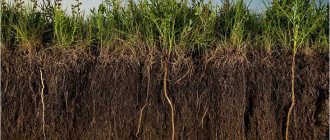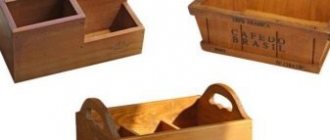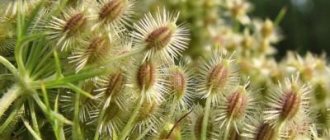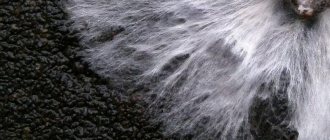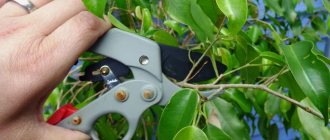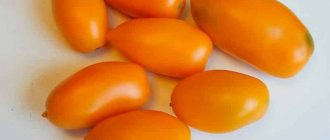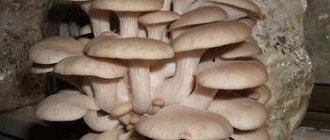Why are they needed?
Installing water troughs in the barn turns out to be a very valuable solution. The fact is that even with a relatively small number of livestock, they need a lot of water. Carrying it in buckets is extremely impractical and tiring. Therefore, equipping an additional device will make the life of farmers much easier. Even if at first it seems like a very labor-intensive task.
A well-made and properly configured drinking bowl is the key to animal health. The result of agricultural work largely depends on it. Using a drinking device:
- fluid supply is regulated;
- cleaning of the drinking point is simplified;
- sanitary safety of animals is guaranteed.
There are different types of drinking bowls, classified by purpose.
Group
Drinkers for a group of animals are invariably of the level type. It allows you to achieve optimal results, regardless of the height and weight of specific animals. Group watering is typical for free-range cows. Such equipment can be installed permanently or allow movement. The second type is used if animals are grazing.
A number of companies now produce group automatic drinking bowls for the street with heating. Such solutions make it possible to ensure free-stall keeping of livestock in areas with harsh climates. It is recommended to find out:
- how strong is the body;
- Is foundation installation required?
- Is the drinking bowl material resistant to aggressive chemical influences?
- Is the system capacity sufficient?
- Is liquid filtration provided?
Individual
This format is optimal for tethered cattle. In order to save money, the majority of farmers make individual drinking bowls on their own. Important: when free-stall growing, preference must be given to a group solution. But modern individual designs may well be automated. When properly executed and installed correctly, the result is a very stable, hygienic system.
Infection of one animal from another through water is excluded. Most existing models are designed for pressure in the water supply system up to 0.2 megapascals. Modern personal watering systems can be made of either plastic or cast iron. The first option is easier, but the second is more reliable.
For pasture
The need for mobile pasture drinking bowls is due to the fact that during grazing, animals also sometimes need to drink. They go to watering in groups (sometimes the whole herd at once), so sufficient tank capacity is of great importance. Depending on the livestock, it is 30-1500 liters. On pastures near the stalls, where you can connect to the water supply, they are usually limited to small tanks.
Constant pumping of water allows you not to worry that there will not be enough water. However, it is still necessary to take into account the fact that many cows or bulls can rush to the drinking bowl at once, which is why it is not recommended to make it very tiny. Drinking devices can be attached to barrels via a flange connection. Of course, when supplying water from wells and open reservoirs, only systems with filtration should be used.
For the stall
Stall-type drinkers are recommended for large herds. Important: along with the water supply device, a milk drinker is often installed in the stalls. In this case, excellent nurseries for young animals are obtained. Nipple drinkers include:
- steel body;
- nipple type valve (same nipple);
- sealing block.
On top of the housing there is a device that supplies running water from the water supply. Nipple drinkers are more hygienic than their conventional counterparts and are easier to maintain. The risk of breakage is relatively small (less than with valve or cup designs).
But we must take into account that the nipple system is almost always purchased ready-made, since it is difficult to make it with your own hands.
Automatic
Often livestock water supply systems operate automatically. An important advantage of such devices is the uniform distribution of liquid. Automation can operate based on valves and floats. In this case, there is a certain similarity with a regular toilet cistern - the main reservoir collects water. Its volume is controlled by a float. Tubes come out of the tank, through which the liquid enters the drinking system itself.
When animals drink liquid, lowering the level in the tank changes the position of the float. As a result, a fresh portion of water from the water supply becomes available. Once the level returns to normal, the pop-up float turns off pumping.
Purely valve complexes also require connection to the main water supply network. The difference lies in the regulatory mechanism. Instead of a float, the role of a regulator is played by the faces of the animals themselves. When, in search of water, they stretch to the right place, they press on the valve. Attention: this scheme is not very practical. The fact is that animals are not able to act rationally. But they have a lot of physical strength. Repairing broken valves and other parts of the system is time-consuming and expensive.
Therefore, a cup drinking system is much better suited for bulls. The design is designed to allow a certain volume of liquid to enter the bowl. As soon as the bowl lowers, the valve located inside stops pumping liquid. If its quantity decreases, the moving structure moves upward due to shock-absorbing struts. The shutter valve is also tightened. The liquid will gradually fill the bowl. It can be difficult to train tethered animals to drink from a cup.
For calves
If there are few animals, you can get by with a basin or trough. In larger farms, 1 stationary drinking bowl is installed for 8-10 young animals. The simplest version of a drinking bowl for calves can be made from an ordinary bucket. However, this solution:
- not roomy enough;
- requires constant monitoring;
- mechanically unstable;
- cannot be done with heating.
Winter
Even during the coldest seasons, cattle need to go outside. Therefore, there is a need for heating in winter, otherwise the drinkers will not work properly. Warming up is most often organized using an electric heating element. It will be necessary to carefully ground and isolate all communications, of course. Another requirement will be the use of safe thermal insulation material.
The water temperature in the drinking bowl should be maintained from 12 to 20 degrees. If it is lower, the cattle will start to get sick. If it is higher, the consequences will also make farmers little happy.
Individual tubular heating systems are very easy to install, but you will have to pay a lot for them.
General heating systems are recommended to be used in conjunction with automated drinking bowls. Central heating is advantageous primarily because it eliminates the problem of timely heating.
Tips for choosing a drinking bowl
The drinking bowl is selected depending on the size of the livestock - it is obvious that complex automated systems are not needed in a rural barn with two pets. The choice of watering device is made based on various factors:
- Climatic conditions. In a mild climate, long and loose walking is possible, which requires group drinking containers made from scrap materials. Harsh weather forces animals to be kept indoors most of the year, where, in addition to heating, a variety of fluid supply systems can be made.
- Remoteness from communications. Supplied water must be used carefully, so it is worth using individual reservoirs with dosed addition of water.
- Dimensions of the breed. A drinking bowl in which a small cow can place her muzzle may be cramped for large representatives of the species. The animal may simply give up trying to quench its thirst.
- Labor intensive. When making it yourself, you need to evaluate your abilities, the availability of the necessary materials, the possibility of implementing the design features of the future and the product, etc.
Did you know? A cow cannot produce milk all the time - in fact, this is preceded by a complex physiological process. For continuous milk production, the animal must be inseminated three months after the previous calving.
Requirements
Cattle breeding practice shows that a cow can produce 1 liter of milk only with 3 liters of water or more. If there is not enough fluid, milk production is reduced after a few hours. The loss immediately reaches 15-20%. Another requirement is that the temperature of the liquid should not be lower than 10-12 degrees. heating must be used in winter
For calves, as well as for bulls and beef cattle, the approach is different. In the first six months of life, cattle need 15-20 liters of water per day. At the same time, the slightest fluctuations in its temperature, as well as contamination, are not allowed. Calves need to drink at least 30 liters of water for 6-12 months. Adult dairy animals require 40-50 liters of water, and meat animals require 60 to 70 liters.
Dimensions and materials
The size of the drinking bowl is determined by three considerations:
- how much space is there;
- how many animals should use it;
- how much water is planned to be poured into it.
As for the material, the key requirements for it will invariably be strength and safety. Metals suitable include black galvanized or stainless steel. The strength of the metal is exceptionally high, but you can be wary of minor deformations upon impact. But washing and disinfection are not particularly difficult.
How to do it?
You can even make quite complex level drinking bowls with your own hands. Along with saving money, working independently helps the owners themselves adapt more flexibly to the specific needs of the cows. Important: before starting work, you should carefully familiarize yourself with the nuances of all designs and the key rules for their use. In most cases, homemade drinking troughs for cattle are a separate reservoir with a valve-float mechanism. The gutters through which the water will be directed are made:
- made of planed wood;
- from poured concrete;
- made of brick.
The selection of material for drinker containers is determined by:
- the size of the cowsheds;
- number of animals;
- personal tastes and priorities.
To work you will need:
- electric drill;
- roulette;
- hammer;
- sand;
- bricks;
- marker;
- welding mechanism;
- profile steel pipe;
- cement;
- hand saw.
First of all, long rectangular steel boxes are welded or riveted. A faucet or a folding wall is placed on one edge. This will allow you to pour out excess water if necessary. The folding wall can be sealed using a rubber seal. Important: it’s better not to make the valve yourself, but to buy it ready-made - it’s more reliable.
In some cases, drinking bowls for cattle are made from boards. In this case, they are carefully adjusted to the required dimensions, and then the remaining gaps are closed with resin. You can also make a plastic drinking bowl with your own hands. Plastic rectangular gutters are purchased for it.
Attention: even for a single cow or bull, the cross-section of the gutter must be at least 0.3 m.
If bricks are used, the tank is plastered both inside and along the outer edges. Another good option is to install a gas cylinder with a capacity of 100 liters. It is thoroughly washed, dried and ventilated. Next, 4 holes are prepared in the gutter:
- drain;
- underwater;
- dumping water into a gutter;
- to connect the heater.
The valve in the tank must be supplemented with a float. Recommendation: making cast iron drinking bowls with your own hands hardly makes sense. It is better and more practical to buy a finished product of this kind.
Experts advise making group drinking bowls with the main pipe passing through the bodies of all containers. Connecting to them using bends can result in severe blockage of the pipeline with food residues.
To learn how to make a drinking bowl for cattle with your own hands, see the following video.
When keeping cattle, it is important to provide the animals with the necessary amount of water. For this purpose, drinking bowls are used, through which cattle can drink as much as they need every day. There are different types of drinking bowls for cattle; you can also buy them or make them yourself. This article describes the main types of drinkers and their features.
Cattle water consumption
It is imperative for cattle to consume large amounts of water. These animals are not small, so the fluid consumption is large. To produce 1 liter of milk, a cow needs to spend about 3 liters of water, but it is important not only for females to drink large amounts of water, for males and calves too. An adult animal can drink up to 70 liters of water per day, a calf – less. If animals do not drink enough water, this negatively affects their health, productivity and development (in the case of young animals). Drinking bowls are devices through which animals can conveniently drink water every day. But to ensure that these beautiful animals do not have problems with drinking, drinking bowls for cattle must meet certain qualities.
Cattle water consumption
What are drinkers for?
Automatic drinker for cows
Water troughs for cows and calves are an integral part of the farm. They are a special design. Their main task is to provide the livestock with clean water. It is considered important for cattle to drink the amount of water they physiologically require.
Cows are large animals, so water consumption on the farm is high. An adult consumes up to 70 liters per day, a calf up to 6 months old – 25 liters. If there is not enough water, then some pathologies develop, which means that the productivity of animals will suffer.
Drinking containers on the farm
A high-quality drinking bowl for cattle not only provides animals with the required amount of water, but also makes the farmer’s work easier. Drinking equipment regulates the water supply, simplifies the cleaning procedure, and guarantees the sanitary safety of individuals.
Requirements for drinking bowls
Not every drinking bowl for cattle can boast of high quality. So what is the ideal water container?
- Safe - without sharp parts that could injure a farmer or animal.
- Eco-friendly - made from high-quality raw materials that will not harm the health of cattle.
- Durable is a very important criterion, because cattle are massive and heavy. If the drinker is made of fragile, low-quality plastic or thin metal, it will not last long.
The drinking bowl should be simple so that it is easy to clean, wash and disinfect.
It is also necessary to take into account when choosing drinking troughs for cattle that many of them are installed on a foundation or require connection to a water supply. So initially, even before purchasing a drinking bowl, you need to decide how it will be connected and where it will be located.
Types of drinking bowls for cattle
There are many different types of drinking bowls. It’s worth understanding them so as not to make a mistake with your choice. First of all, drinking bowls are divided into group and individual.
- Individual drinking bowls are usually used when animals are kept on a leash or in separate stalls. Such designs can be a simple bucket or more complex, automated systems. Such drinking bowls are convenient, first of all, because they prevent infection of animals through water (in case of illness of one individual).
Individual drinking bowls are usually used when animals are kept on a leash or in separate stalls
Also, drinking bowls for cattle are divided according to location.
Mobile drinking bowls are used for pasture
- For pasture, mobile drinking bowls are used that can be moved as needed. They have a convenient large-volume reservoir (30-1500 l) so that the herd can drink as needed. If the paddock is located next to a water supply, you can do without a water tank by filling the mobile structures with water from a hose.
- for the stall , the main thing is that they are comfortable for the animals and durable. In the case where there are also young animals in the stall, a milk drinker can be installed next to such drinking bowls.
Depending on the type of work, manufacturers make different types of drinking bowls for cattle.
Automatic drinking bowls for cattle are convenient because water flows into them as the animals drink
- Automatic drinking bowls for cattle (with a valve-float supply system) are convenient because water flows into them as the animals drink. That is, when the water level in the drinking bowls decreases, water is automatically added to them. The design is made in such a way that the liquid is distributed evenly throughout all containers, so that all animals in the barn will be able to drink as much as they need. Operating principle: when the float in the main tank drops below the required level, water begins to flow into it, and when it fills and the float rises to a certain level, the water supply stops.
Nipple drinkers are hygienic and easy to maintain
- Cup drinking systems are simple and practical. A certain amount of water flows into the bowl. When the cow drinks, the water becomes low (the bowl rises) and the liquid supply valve opens. When the bowl is filled, it lowers under weight, closing this valve. The main problem of such drinkers is to accustom cattle to them.
- Teat drinkers for cattle contain a main body, nipple valves (teat), and a sealing block. They can be connected to a water supply or refilled with a hose. These drinkers are hygienic and easy to maintain. In addition, they very rarely break, unlike their analogues, but they also cost more.
Drinkers for cattle: what are they and why are they needed?
Not a single farmer involved in livestock farming can do without this equipment. Drinkers for cattle are installed so that animals can get enough water. The correct water balance affects the quality and quantity of the resulting product. The requirements for drinking bowls are:
- accessible regulation of water supply;
- convenient cleaning of the tank to maintain sanitary standards;
- the harmlessness of the materials from which the equipment is made;
- safe use of the structure by animals - the drinking bowl should not contain sharp corners or dangerous parts.
Water is necessary for the absorption and digestion of feed. Its lack affects digestion and slows down the absorption of nutrients into the blood. Therefore, it is advisable to purchase ready-made structures or make them yourself. Buckets and troughs are gradually going out of use because they do not meet sanitary standards. Nowadays, the latest equipment is presented by different manufacturers, their models differ in originality and volume. Clean water received by an animal through a drinking bowl has a positive effect on its physiological activity and proper development.
Note! Before installing equipment for obtaining water, it is necessary to determine how much liquid one animal can consume per day. Beef cattle breeds require less water than meat and dairy breeds.
Heated drinking bowl for cattle
Regardless of the time of year, cattle should drink enough water. The normal water temperature in the drinking bowl in winter is +12…+20 degrees Celsius. If it is lower, the animals will begin to get sick, and this is extremely unprofitable for the breeder and dangerous for the entire herd. But what to do in winter, when the liquid literally freezes in the bowls? In such cases, a heated drinking bowl for cattle will help. Heating is carried out by a simple electric heating element. It is connected to the drinking bowl, grounded, and all wires are insulated so that the structure is safe.
A simple do-it-yourself drinking bowl for cows
If the drinking bowl for cows is broken, and there is no time or money to buy a new one, you can temporarily make a simple drinking bowl with your own hands. You can build it from metal, plastic, wood - whatever you have at hand.
The first step is to decide on the size - the drinking bowl should be enough for all animals. The simplest design option involves creating metal troughs or gutters into which water will be poured. They are welded from a sheet of metal and coated with paint. At the bottom of the trough there is a drain for excess water so that you can conveniently clean the drinking bowl. Then you need to weld the legs to the troughs or attach them to the wall. Water is poured into such drinking bowls from a hose connected to the water supply.
If necessary, a heating system is connected to this drinking bowl or warm water is simply poured. Over time, you can connect water supply to the drinkers to make filling the drinkers easier.
Providing cattle with the necessary amount of clean, fresh water is the task and responsibility of every farmer. Drinkers for cattle come in different types, and are selected according to the needs of the animals and the capabilities of the owners. If you wish, you can make a drinking bowl with your own hands, but this is a labor-intensive task, because the animals are not small and they need large, durable and reliable drinking bowls. Therefore, most often water systems are still purchased in stores.
Drinkers for cattle are a very important thing, without which not a single farming enterprise based on the use of products supplied by cattle can be successful. The fact is that water is a liquid that gives life to all living things, and only its consumption by livestock in sufficient quantities can lead to you eventually receiving high-quality agricultural food products, such as milk and meat. The equipment in question can be purchased in specialized stores, or made independently from various available materials. Let's look at how to assemble drinking bowls for cattle with your own hands.
Contents of step-by-step instructions:
Do-it-yourself watering hole equipment
Quite simple drinking bowls are made independently from scrap materials. For this purpose, strengthen an ordinary bucket and add water as necessary. You can make a gutter from materials that can always be found on the farm:
- wood;
- plastic;
- laid and plastered brick;
- metal
Water reservoirs for animals can be ordinary buckets. They are available and have a low price, but this option is not very reliable, and, in addition, has low capacity.
Attention! A more interesting option might be a trough or basin with a larger capacity. However, these options are only applicable to small farms, since constant manual addition of water is required.
If the cattle population is large enough, group models of heated drinking bowls are used. One of the simplest options is a long pipe with welded ends of increased diameter, sawn lengthwise. If there is no running water, this container is filled with water in winter, using a boiler to heat it. Thus, the animals receive plenty of water before it freezes.
What are the requirements for drinking bowls for cattle?
Calculation of the parameters of a future drinker, both purchased and constructed independently, should be made based on several factors, such as:
- individual volume of fluid consumed for each herd representative;
- age of cows and bulls;
- main focus of farm production.
Thus, representatives of such a group of farm animals as cattle may have the following orientation:
- meat (calves, sires);
- meat and dairy (cows);
- dairy (also cows).
Purchased device for level cow feeding system
Depending on which direction the animal belongs, it will be possible to determine the volume of the drinking bowl. It is taken into account that for every liter of milk produced by a cow there will be approximately 4 liters of water. It turns out that if one individual produces on average about 15 liters per day, then the drinking bowl for it alone should hold at least 60-70 liters of fresh water.
Provided that you exclusively keep bulls for sale for meat, or breed young calves, you need to take into account that even at a young age, these animals must consume at least 30 liters per day.
In addition, the age category of the animals, their physical condition and other factors will also influence:
- quality of water supplied to animals for drinking;
- liquid temperature.
Young animals that have not yet mated or given birth must consume at least 50 liters of water per day.
A bucket with a hose is a cheap analogue of a purchased device
The importance of drinking bowls in animal care
Cows need about 80 liters of water per day, and dairy cows need up to 130 liters. To provide pets with uninterrupted access to liquid, individual drinking bowls of various modifications are installed in barns. The advantage of such devices, compared to a conventional bucket or trough with water, is obvious:
- the animal consumes liquid in doses, in accordance with its needs;
- the infection will not pass through a system of communicating vessels (as happens in group feeding systems) from one individual to another;
- the individual drinking bowl is easy and quick to clean;
- It is possible to feed a sick animal or calf in isolation.
Group drinkers are systems that are quite difficult to maintain after blockages, which leads to stagnation of liquid.
Important! When keeping pets tethered, individual tanks are preferable, and when the herd moves freely around the barn, it is better to use one drinking bowl for a group of 15-20 cows.
Types of drinking bowls for cows and bulls
According to the existing classification, today there are only two types of drinking bowls for cattle. Let's look at them in the table below.
Table 1. What types of drinking bowls for cattle exist today
| View | Description |
| Individual drinking bowls | The drinking bowls of this variety are intended for feeding one animal. Such designs are quite easy to make with your own hands, without having to buy them in a specialized store. |
Individual drinking bowls are used most often for cows that are kept alone on a leash.
There are two types of such equipment:
| Group drinking bowls | This type of drinker is used in medium or large-sized farms to provide fresh water to not one, but several individuals. |
- stationary, that is, installed in a specific place and used there;
- mobile, in which you can take drinking bowls to a pasture, where cows independently get their own food in the summer.
Kinds
Technological progress and experience accumulated over many centuries have helped to invent various types of drinking systems, even using computers and programming. But in private households and small farms everything is much simpler and cheaper - they use inexpensive purchased drinking bowls or devices made independently.
Learn how to make and set up a cow stall.
Individual
This type of watering device is suitable for a farm where one or more cows are kept. You can use a simple large bowl, bucket or tub - that is, any available container. Purchased containers of both general household type and specialized ones intended for watering livestock are also used.
- pros
- low costs (or none at all);
- ease of use (for humans, not cows);
- no need for specialized installation;
- ease of replacement in case of failure.
- Minuses
- stagnation and spoilage of water due to lack of flow;
- the need to frequently wash the container;
- inconvenience of its use for the animal.
Special individual drinking bowls with a personal water supply are expensive and are designed for use in large farms where there is the possibility of serious financial investments.
Group
The group system is suitable for both pasture and barn and consists of an inclined trough with a water tank at its upper base. There is a drain at the bottom that allows unused water to drain away.
- pros
- simultaneous quenching of thirst by several cows;
- simplicity of the device;
- no stagnation of water.
- Minuses
- lack of control over the amount of water drunk by each individual;
- high water consumption (in pasture conditions this is quite a critical indicator);
- the possibility of animals infecting each other.
Level type tanks
Group watering systems can be a little more complicated for better and more economical delivery of liquid to cows. Various drinker levels provide portioned water supply as the livestock consumes it.
- pros
- no wasteful drainage of unused water;
- dosage of drinking for each individual;
- Possibility of use by several animals at the same time.
- Minuses
- as in a group drinking bowl - the possibility of infection;
- when there is a pause in use, fluid stagnation is possible;
- technological and structural difficulties of implementation and, as a result, increased costs.
Any of the listed types can be implemented in the form of an automatic drinker.
This requires additional costs and design work. Typically, such systems are installed for valuable breeds of cattle. Did you know? Despite the stereotypes, the cow is a very clean animal. She will not eat from an unclean feeder or drink stagnant water from a dirty drinking bowl.
Simple types of drinkers
As you can understand, small farms differ from large ones primarily in that they have a different financial situation. Simply put, it is more difficult for their owners to purchase automatic equipment for feeding livestock, or materials for their own production.
It is for them that the most common household items, such as:
Such tanks also have obvious advantages:
- they are cheap to buy;
- easy to install at the site of future use.
An ordinary bathtub can serve as an excellent drinking bowl
However, unfortunately, a significant drawback of such containers is their size, which necessitates the constant need to replenish them with fresh water. In addition, due to the lack of heating of such structures in winter, you will either have to heat the entire barn, or use these devices only in the summer.
Automatic waterers for cattle
Now that we have looked at simple options for drinking bowls, let’s turn our attention to devices with automatic water supply.
Drinker with valve-float device
This type of drinker is automatic. Its operation is carried out by supplying water from a common reservoir with liquid to drinking bowls:
Valve-float drinker, drawing
The operating diagram of this drinking bowl is similar to the principle of operation of a cistern in a toilet, which is a water-accumulating reservoir. A special float is installed inside it, which is responsible for regulating the water level.
Pipes extend from this tank leading directly to the drinking tanks. As the water entering the drinkers is consumed, the contents of the drinking containers will be replenished with the liquid in the tank. In turn, the float in the tank will change position, as a result of which water will again be replenished inside it.
How exactly will the replenishment of water in the drinkers be regulated with such a system? It's simple: at the bottom of these devices there are valves, which cows press with their muzzles while drinking, thus triggering a dosed replenishment of liquid.
Water enters the drinker after pressing the valve
Please pay attention to an important nuance: for the valve-float automatic drinker to work, the main tank must be connected to the water supply network.
Unfortunately, many farmers note that the valve-float system is very fragile, and cows often break one or another element during its operation.
Cup type drinkers
The drinking bowls of the type in question are equipped similarly. They are also automatic, and therefore water flows into the bowl from which the cows drink water by itself, without human intervention.
The principle of operation is to move the thicket through it:
These movements are carried out by shock absorber struts. Provided the cup is full, it:
- falls down on the racks;
- blocks the flow of water by pressing a special valve, and the drinking bowl does not overflow with water.
Cup drinker for cattle
If there is not enough water, the bowl, accordingly:
- rises up;
- releases the valve, which, when opened, allows water to refill the container.
Please note : cattle must be taught from childhood to drink water directly from bowls.
Nipple-type veal drinkers
Nipple drinkers, as their name suggests, imitate the udder of a cow. They are used directly for feeding small calves. This drinking machine is equipped with special valve nipples.
Valve and float automatic drinkers
If there is a centralized water supply, it is possible to use valve or float devices. The valve drinking bowl is connected to the water supply. The supply of drink is regulated by the animal itself when, when trying to get drunk, it presses the lever with its muzzle. Such a device often fails, because animals can be wayward.
The float drinker is designed on the principle of a toilet cistern. Small containers and a separate tank extend upward from the pipe, into which drink is supplied. A float is installed in this tank to regulate the liquid level. This device operates as follows:
- Animals drink water, its level in the system decreases.
- Thanks to the float, a new influx of water enters the system to replenish its level in the system.
Advice. Using a float system has a serious drawback - during frosts, part of the water supply may freeze. To avoid this, as well as to reduce the incidence of diseases in animals, it is advisable to heat the water.
How to make a drinking trough for cattle with your own hands: instructions
So, now that we have learned enough about drinking bowls for cattle, let's start making one of them using a valve-float or, in other words, a level mechanism.
Step No. 1 - select the appropriate material for making the drinker
If you decide that buying agricultural drinkers is beyond your means, then it is best to make a simple design with your own hands. First we will have to determine which material is suitable for their manufacture.
Table 2. What materials can be used to make drinking bowls for cattle
| Material | Characteristics |
| Metal | This material is the most durable and durable. Two types of metals are suitable for drinking bowls:
|
The only thing that can happen to structures made from the listed materials is the occurrence of minor deflections under the influence of the impact of the cow’s body parts.
In addition to durability, metal structures have the following advantages:
| Tree | The main advantage of this material is its environmental friendliness. At the same time, wood is very reliable in use and is difficult to deform. |
However, drinking bowls can be made from wood only after proper processing, namely:
Unfortunately, even in this case, drinking bowls made of wood will not be able to function as long as, for example, metal ones, since in any case they will gradually become damp, rot and become overgrown with mold.
PlasticPlastic today is perhaps the cheapest and easiest to work material that not only lasts a long time, but is also easy to clean and disinfect.Such plastic drinkers can be used for a long time, however, only after they have been cleaned and plastered on the side where the water will be located.
The drinking bowl can be made from various materials
The listed materials are suitable not only for making containers, but also gutters through which liquid will flow to the cows' drinking bowls, however, they can also be constructed from:
Whatever material you choose initially, reading the instructions further will help you understand whether it is worth replacing, so you don’t need to make a decision right away.
Step No. 2 - designing a drinking bowl
As we have already said, the design of a float-valve drinker consists of organizing a reservoir that operates on the principle of a toilet cistern and pipes running through it, the water supply system from which to the drinking container will be based on the pressing of special valves.
The optimal volume of drinkers for cattle, the herd of which is represented mainly by adults, will be 140 liters.
The length of such an installation must reach at least 2 meters.
Drawing of a float valve system for water
It is important to consider the following nuances:
- so that the animals do not rub their larynxes while drinking, and they do not have to bend their necks too much, it is necessary to remove the upper edge of the container for feeding livestock from the base of the room by at least 8 centimeters;
- containers should not be far from the feeders, the maximum permissible distance between them should be 15 meters;
- in one barn, provided that you keep a substantial livestock, there should be several drinking bowls so that the cows do not crowd around them (about 1 drinking container for 25 cows, provided that each drinking bowl is filled with 15 or more liters per minute).
Water trough for cows
After you have determined the listed important nuances, correlating them with the premises you have and other nuances of arranging the barn, we will move on to collecting the tools necessary for the work.
Step No. 3 – collect the necessary materials
At this step, you will need to stock up on the materials necessary to build a drinker, namely:
- brick;
- a plastic gutter of rectangular cross-section, the size of which will be at least 30 centimeters;
- profile metal pipes;
- apparatus for welding work;
- drill;
- construction ruler;
- sand;
- a gas cylinder (can be old, but intact);
- a regular saw and a metal saw;
- hammer;
- felt-tip pen.
In this case, we will describe how to make a drinking bowl from plastic containers, however, you can use the material of your choice.
Step No. 4 - assembling the drinking bowl
So, we purchased a plastic gutter from the store. You also need to buy plugs for it on both sides so that it begins to resemble a container, which, in fact, it is, because it is from this that the cows will drink water.
This plastic tray from the gutter and plugs will need to be assembled, tightly securing all its parts relative to each other.
Depending on the material you choose, the sequence of actions you perform will vary.
Then it will be necessary to weld metal legs for this box by cutting a thin profile pipe and welding it in such a way that a plastic structure can be placed on it without fear of it being toppled over.
If you chose metal as the material for the drinker, then you will have to:
- draw up a drawing yourself, outlining the details of the trough on it;
- cut out these parts;
- weld them using a welding machine;
- install on metal legs.
If you choose a tree, then you will need:
- sand it;
- cover with safe enamel;
- cut out the details of the trough;
- connect them using fasteners, and either coat the cracks with resin or close them with metal inserts from the inside of the container.
To drain the water remaining at the bottom for processing dishes, it is necessary to equip it with a hole through which the tap will come out. A hole is made in the lower part of the trough, and is closed from the inside with a mesh that will retain the accumulated debris falling from the cows' faces. A rubber seal must be laid between the mesh and the trough.
A properly cleaned cylinder can be used as a water reservoir
We will use a gas cylinder with a volume of approximately one hundred liters as the main tank. Before using it, you need a container:
- rinse thoroughly;
- dry;
- leave to air out.
When the part is ready, you need to make four holes in it:
- to drain remaining water;
- for a pipe coming from a water supply;
- for a pipe through which water will flow into drinking containers;
- for a heating device.
A valve with a float must be installed inside the gas cylinder, which will regulate the flow of water into the structure
Step No. 5 - set up automatic heating
In order to prevent cows from getting sick in winter when exposed to low temperatures, it is necessary to equip a heating system that will bring the water to the desired temperature, approximately +15-+20°C.
Heating can be individual or general. In the first case, these will be tubular electric heaters, which last a long time and are easy to use. Unfortunately, they themselves cost a lot, and in addition, they will “supply” you with large electricity bills.
Drinkers need to be heated in the cold season
A general type heating system is represented by a connection to a central heating element. In other words, the water in the tank will immediately flow warm, since it will be heated outside the tank, by receiving thermal energy from the central heating system, boiler farm, or a large furnace installed for the barn
You will decide for yourself which heating system to choose based on:
- financial potential of the farm;
- the number of cows you have;
- availability of construction skills;
- barn technical equipment;
- location of the barn relative to the heating system, etc.
It doesn’t matter what you choose, but the main thing is that there is a connection to heat in any case
Let's sum it up
Cattle drinking troughs are an integral element of the farm. Not a single production of dairy or meat product can do without them, since to obtain, for example, 1 liter of milk, the cow needs to drink 4 liters of clean water.
The same applies to increasing high-quality meat mass, which is impossible without constant consumption of water by cows and bulls in sufficient quantities. To prevent interruptions in its supply, you need to buy or assemble high-quality and strong feeders with your own hands. After reading our article, you will receive an action plan that you can refine individually.
Video - Do-it-yourself drinking bowl for cattle
Nikolay Zhuravlev chief editor
Author of publication 10/23/2018
Did you like the article? Save so you don't lose!
The best drinker companies from manufacturers
If you have the financial opportunity, it is better to buy a ready-made device made by professionals. This will save a lot of time spent on handicraft work and will help in better care of the animals.
Quite well-known organizations that manufacture individual and group drinkers are the following:
- Agropromtekhnika LLC (Izhevsk);
- TD "AiS Agro" (Omsk);
- "USS AGRO" (Izhevsk);
- Mila-M LLC (Saransk).
In fact, there are many more manufacturers, and their products are of high quality and meet demand. The main problem is the presence of many resellers, both official and not. Such structures are active in the market, and behind their activity it is often difficult to find a real manufacturer of farm equipment with reasonable prices. Drinking is one of the main physiological processes for cattle. Therefore, comfortable conditions for quenching thirst are an important incentive for good milk yield or weight gain by animals.
